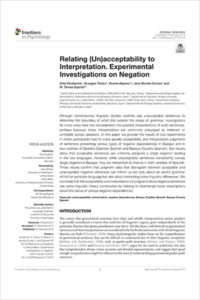19 juny, 2010

Autors:
Ángel J. Gallego
Títol:
Phase TheoryEditorial: John Benjamins Publishing Company
Data de publicació: 2010
Pàgines: 365ISBN13: 9789027255358
Més informacióThis book provides a detailed and up to date review of the framework of phases (Chomsky 2000 and subsequent work). It explores the interaction between the narrow syntactic computation and the external systems from a minimalist perspective. As has sometimes been noted, Phase Theory is the current way to study the cyclic nature of the system, and 'phases' are therefore the natural locality hallmark, being directly relevant for phenomena such as binding, agreement, movement, islands, reconstruction, or stress assignment.
This work discusses the different approaches to phases that have been proposed in the recent literature, arguing in favor of the thesis that the points of cyclic transfer are to be related to uninterpretable morphology (the Φ-features on the heads C and v*). This take on phases is adopted in order to investigate raising structures, binding, subjunctive dependents, and object shift (word order) in Romance languages, as well as the nature of islands.
20 juny, 2018

Autors:
Anna Gavarró, Stephanie Durrleman (Eds.)
Títol:
Investigating grammar in Autism Spectrum DisordersEditorial: Frontiers in Psychology
Col·lecció: Frontiers in Psychology #19Data de publicació: 2018
Més informació
Text completAutism Spectrum Disorder (ASD hereafter) is a neurodevelopmental condition characterized by deficits in communicative and social skills. Consequently, the vast majority of research on language in ASD has focused on pragmatic difficulties, while considerably less is known about structural aspects of language in this population. Work on syntax and phonology is not only sparse, but the large heterogeneity in these grammatical domains has moreover led to conflicting reports that they are either intact or impaired. A few recent studies have thus attempted to focus instead on elucidating the different language phenotypes on the spectrum, leading to the identification of a subgroup with ASD displaying deficits reminiscent of those attested in Specific Language Impairment (SLI). Still, much more remains to be understood about variations in these grammatical profiles, as well as their relation to other abilities, such as IQ, working memory and theory of mind.
Títols de la col·lecció / Also in this series:
20 juliol, 2008

Autors:
Anna Gavarró (Ed.) and M. João Freitas (Ed.)
Títol:
Language Acquisition and DevelopmentEditorial: Cambridge Scholars Publishing
Data de publicació: 2008
Pàgines: 520ISBN13: 978-1-8471-8618-8
Més informacióThis volume gathers fifty papers from the conference Generative Approaches to Language Acquisition, GALA 2007, celebrated in Barcelona between the 6th and 8th of September, 2007. It covers the areas of syntax and phonology of child language from the theoretical perspective of generative grammar – the theoretical outlook which first placed language acquisition at the centre of linguistic inquiry.











